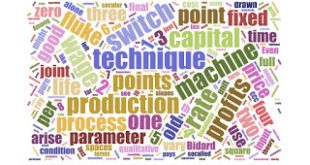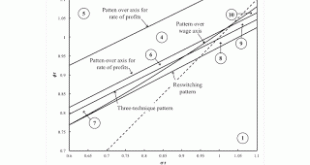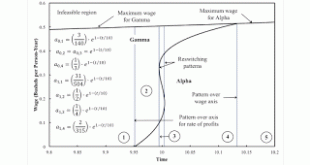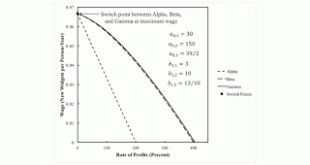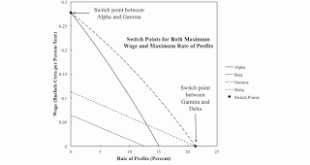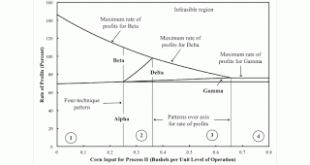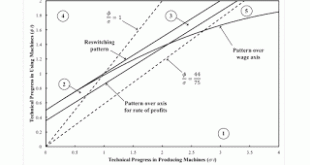I have found a common misrepresentation from many, including mainstream economists, is that critics of their models do not understand them or the role of the assumptions. Those mainstream economists rely on an incoherent essay from Milton Friedman to dismiss criticism of the realism of assumptions. My favorite criticism, though, is that their conclusions do not follow from their assumptions. I like to show this by constructing numerical examples that contradict their teaching. On the...
Read More »On Sraffian Subsytems And Labor Values
1.0 Introduction I recently stumbled across McKiernan (2017), an Austrian response to Sraffa's book. This is a weird working paper. He works through Sraffa, with apparently no knowledge of all the textbooks explaining the book. McKiernan correctly notes that Sraffa provides little context about his points. And the mathematics is not always explicit. Naturally, McKiernan makes mistakes. If he ever revisits this, I think he would want to break it up into several papers. (Fabra (1991) is the...
Read More »Fluke Switch Points in Pure Fixed Capital Systems
I have a working paper at the Centro Sraffa. Abstract: This article considers structural economic dynamics, in models with fixed capital and a choice of technique, of the production of commodities. Fluke switch points are described and cataloged. For fluke switch points, parameter perturbations create a qualitative change in how the choice of technique varies with distribution. Techniques are presented for visualizing partitions of parameter spaces such that the analysis of the choice of...
Read More »The Truncation Of The Economic Lives Of Machines
'Paradoxes' and 'Perversities' PhenomenonExampleRegionReswitching'One good'5Schefold reswitching3Schefold roundabout3Baldone8Recurrence of technique (without reswitching)Baldone9Recurrence of truncation (without reswitching or recurrence of technique)Two sectors with fixed capital2Non-monotonic variation of economic life of machine (without reswitching or recurrence of technique or of truncation)Baldone10'Non-continuous' variation in economic life of machine associated with infinitesimal...
Read More »More On Baldone Example
Figure 1: A Two-Dimensional Pattern Diagram, Enlarged1.0 Introduction This post further generalizes an example from Salvatore Baldone.. Like an example from Bertram Schefold, I find that Baldone's example is in a wedge near the edge of the appropriate region in one of my partitions of a parameter space. I have some very complicated spreadsheets that allow me to quickly visualize the effects of varying parameters. Baldone and Schefold were working long before Visicalc, Microsoft Excel, or...
Read More »Triple Switching and Fluke Switch Points
Figure 1: A Pattern Diagram with Triple Switching In demonstrating the lack of foundation for claims of the Austrian school about the supposed relationships between a greater supply of capital, a consequent lower rate of profits, and a longer period of production, I have so far only presented examples in which the economic life of an existing machine can be extended or truncated. Schefold (1980: 170) interprets a more roundabout technique as one in which a long-lived machine is used to...
Read More »A Three-Technique Pattern Over The Wage Axis
Figure 1: Wage Frontier for a Fixed Capital Example This post presents a perturbation of parameters in a 'one good' model of fixed capital. The coefficients of production differ from those in this reswitching example. But the model has the same structure. Consider a one-commodity economy in which labor and widgets are used to produce new widgets, the only consumption good. (The use of the term 'widget' to designate the single produced commodity emphasizes how unrealistic this model is.)...
Read More »Fluke Switch Points At Both The Maximum Wage And The Maximum Rate Of Profits
Figure 1: Wage Frontier for a Fixed Capital Example1.0 Introduction I continue to explore the simplest multisector model of the production of commodities by means of commodities in which circulating and fixed capital is used in both sectors. In previous explorations, I locate a four-technique pattern, observe recurrence of truncation, and provide an example in which truncating all machines is infeasible. I think my taxonomy of fluke switch points and methods of visualizing the effects of...
Read More »Recurrence Of Truncation In A Perturbation Analysis
Figure 1: Variation of Choice Of Technique with a Coefficient of Production This post continues the analysis of this example. The coefficients of production and the techniques are the same as in the linked post, except here I consider the results of varying a1, 2, the amount of corn needed as circulating capital in operating Process II at unit level. Figure 1 above shows how the choice of technique varies with this parameter. This is a two-sector model, in which new machines and corn are...
Read More »More On A Fixed Capital Example
Figure 1: A Partition of a Parameter Space for the Schefold Example1.0 Introduction I want to revisit a perturbation analysis of an example, from Bertram Schefold, of reswitching with fixed capital. Suppose workers use a machine to produce something or other, where the machine lasts several production periods. It is a possible choice to run the machine for less than its full physical life. One might think than choosing to adopt a technique with a longer economic life of the machine...
Read More » Heterodox
Heterodox

